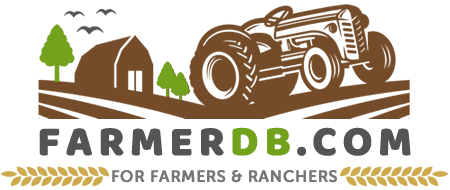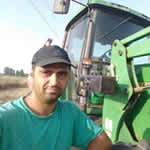The Spanish goat is a meat breed that originated in Spain, but it was spread by Spanish explorers throughout different regions of America in the 16th century.
They expanded across various areas, from the Caribbean to Florida, Texas, and California. Their population remained stable until the mid-1900s when new goat breeds, such as the Boer, were introduced to America.
Farmers preferred these new breeds and either replaced their Spanish goats or crossbred them. As a result, the population declined, and purebred Spanish goats became very difficult to find.
In 2007, the Spanish Goat Association was founded to protect and preserve the breed.
Today, efforts continue to maintain pure Spanish goat bloodlines. DNA testing, breeder programs, and conservation initiatives help ensure their survival.
While their numbers have increased, they are still at risk.
Spanish goats remain an important part of American livestock history and are now recognized as a hardy, independent breed with a valuable role in farming.
Contents
Spanish Goat Bloodlines
The Spanish goat is a landrace breed with over 16 different bloodlines, each with unique traits. These bloodlines developed based on herd history, environment, and breeding practices.
According to the association, the following are the recognized bloodlines and their current status:
- Allison Ranch: A Texas herd that is still active on the Allison Ranch.
- Baylis: A Mississippi foundation herd that is no longer in production at the Bob Baylis Ranch.
- Bode: A Texas foundation herd that is no longer maintained at the Bode Ranch.
- Bradshaw: A Texas foundation herd that is no longer in production at the Bradshaw Ranch.
- Concharty: A Texas herd that was discovered but is no longer active on the Herd Ranch.
- Devil’s River: A Texas foundation herd formerly managed by Marvin Shurley, but no longer in production.
- Kensing: A Texas foundation herd still actively bred on the Kensing and Whitworth Family Ranches.
- Koy Ranch: A Texas foundation herd that remains in production at the Koy Ranch.
- Lowcountry: A South Carolina foundation herd that is no longer bred on the Coastal Island.
- Middle Valley: A well:established Texas herd still in production at the Middle Valley Spanish Goat Ranch.
- Morefield: An Ohio foundation herd currently being raised on the Morefield Ranch.
- Pape: A Texas foundation herd that remains active at the Elgin Pape Ranch.
- Partin: A Florida herd that was discovered but is no longer maintained at the Doc Partin Ranch.
- FSG Fullblood Spanish Goat: A designation for herds or goats resulting from multiple Fullblood Spanish Goat bloodline crosses.
- Sawyer: A Texas foundation herd still in production at the Neely:Sawyer and Eddie:Sawyer Ranches.
- Smoke Ridge: A Montana foundation herd that continues to be bred at the Smoke Ridge Ranch.
- Syfan: A Texas foundation herd still actively maintained at the Three Mill Ranch.
- Valera: A Virginia foundation herd currently in production at the Muddy Run Farm.
- Weinheimer: A Texas foundation herd that remains in production at the Weinheimer Ranch.
- Wood: An Ohio foundation herd that is no longer maintained at the Wood Ranch.
Characteristics
Since there are natural variations between them, there is no fixed breed standard. Instead, Spanish goats are identified based on certain characteristics.
Key physical traits include ear size and position, horn shape, facial profile, weight, height, and winter cashmere growth.
When selecting Spanish goats, you should look for a good bite, two clean teats, and well-formed testicles with minimal or no split. The ears should be forward-facing and horizontal, while the horns should twist to the sides.
Healthy goats should have solid, well-shaped hooves, a straight back, a tight tail position, and strong muscles. Their eye flesh should be a bright pink, indicating good health.
Size
This goat is a medium-sized breed. The exact measurements can vary depending on the bloodline and environment.
It is larger than small goat breeds like the Nigerian Dwarf but smaller than large meat breeds like the Boer goat.
Lifespan
Spanish goats have a lifespan of 8 to 10 years, but their longevity varies based on genetics, diet, and surroundings. With the right care, they may exceed this range.
Growth Rate, Weight, and Slaughter Time
This goat’s growth rate is not as fast as other meat goats but is well-balanced. At maturity, it can reach a weight of 60–125 lbs (27–57 kg). They can be slaughtered at around 10 to 12 months for a larger carcass weight. The dressing percentage of this breed is around 45% to 48%.
Temperament
This breed is alert, cautious, and somewhat wild, making it difficult to handle. It is definitely not suited for beginners. Spanish goats are hardy, intelligent, and excellent at avoiding predators.
While they can become more manageable with frequent handling or bottle-feeding, they are not naturally docile. They are energetic, active foragers and less social than other goat breeds, requiring patience and experience to manage.
Usage
The main use of this goat is meat production. Its meat is lean, flavorful, and considered healthier than that of some other breeds.
While not a dairy breed, Spanish goats can produce milk, but in small amounts. Their small udders help them avoid injuries in rough terrain. Some farmers use their milk for feeding kids or personal use.
Their hides and skins are also useful for leather production. The Spanish goat’s tough hide makes it valuable in some markets.
On top of that, some Spanish goats grow a bit of cashmere in the winter. While they are not a cashmere breed, this soft undercoat helps them stay warm and can be collected for textiles. Their coarse outer hair stays year-round, but the fine wool sheds naturally in spring unless combed or gathered.
Raising
Feeding
This goat’s diet can include forage, grains, safe tree bark and branches, fruits, vegetables, and protein supplements.
If you have good pasture, you can let the goats graze freely, as they can live on pasture alone if enough vegetation is available. They eat grass like Timothy, Ryegrass, Fescue, or Bermuda, as well as weeds, brush, and shrubs like blackberry bushes. They also eat tree leaves from oak, mulberry, or maple.
In colder months, you can provide high-quality hay such as alfalfa, clover, orchard, Bermuda, or Timothy.
For grains, you can give them oats, barley, wheat, rye, sorghum, soybeans, or corn. Grains are especially important for pregnant or lactating goats, as they need more energy.
Fruits and vegetables are also good additions if available, such as apples, berries, watermelon, carrots, beets, or cucumbers.
Always provide clean water, minerals, and salt blocks for a balanced diet.
Environment
These goats do well in large open spaces where they can move freely and find food on their own. They are great climbers and can live in mountain areas, where they burn energy and eat shrubs, brush, and tough plants.
You should raise them in a big area with plenty of forage so they can stay active and healthy. If they have space to climb and explore, they will develop strong muscles and stay in good shape.
Climate and Shelter
This breed can live in hot, dry, and temperate climates and can also adapt to cold areas with the right care.
Spanish goats do well in hot places like the Southwestern United States because they can handle heat. Their short hair keeps them cool, and they can survive on limited food and water. For this climate, they do not need a sophisticated shelter, just a simple one to provide shade.
In cold weather, they need a warm but well-ventilated shelter to stay healthy. While they are not as cold-hardy as woolly goats, some grow a soft undercoat in winter to help them stay warm.
How many goats per acre?
How many Spanish goats you can keep on an acre depends on the land and how much extra feed you’re willing to provide.
If you have plenty of grass, weeds, and brush, you can keep 6 to 8 goats per acre without much extra feeding. If the pasture is just okay, you might need to supplement with hay or grain, and you can probably manage 4 to 6 goats.
In dry or poor pasture areas, it’s best to stick to 2 to 4 goats since they’ll need regular feeding.
Health Issues
Spanish goats are hardy, have strong immune systems, and can survive in harsh environments with minimal medical intervention.
One of their biggest advantages is their high resistance to internal parasites, especially compared to other goat breeds. While they can still get worms and other parasites, they are less affected and usually do not require frequent deworming.
Despite their resilience, Spanish goats can still face common health problems such as hoof issues, pinkeye, respiratory infections, and nutritional deficiencies.
Advantages
- Hardy
- Disease-resistant
- Low maintenance
- Good foragers
- Year-round breeding
- Good climbers
Disadvantages
- Not docile
- Slower growth rate than other meat breeds
- Low milk production
- Not ideal for cold climates
Do you have any experience with the topic discussed here?
Would you like to improve the information shared and contribute your practical knowledge on the subject?
Your real-world experience as a farmer or rancher could greatly benefit other members, and the community would deeply appreciate your contribution.


